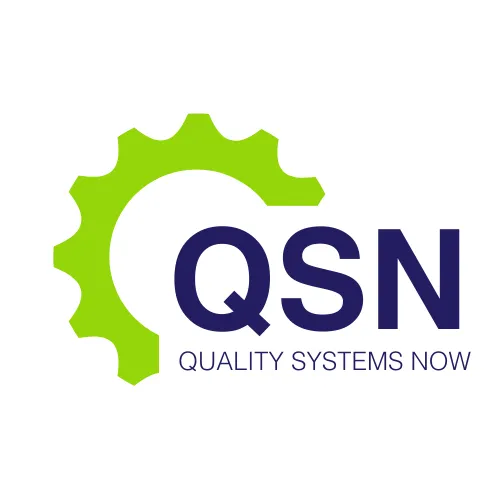NEWS

What Should You Consider When Selecting an eQMS?
Introduction: Selecting the Right System to Support Compliance
An electronic Quality Management System (eQMS) is a central pillar in the operational infrastructure of any life sciences organisation. For therapeutic goods manufacturers, testing laboratories, and biotechnology companies, it is not only a digital tool but a compliance-critical framework that supports data integrity, document control, change management, and continuous improvement. At QSN Academy, the educational arm of Quality Systems Now, we support regulated businesses in identifying, implementing, and optimising eQMS solutions that align with regulatory expectations under GMP, ISO 13485, and related standards. The decision to select a particular eQMS should not be driven by cost or convenience alone. Instead, it must be based on a comprehensive understanding of your regulatory obligations, operational maturity, and quality objectives.
Request Our Training Video on the subject
Regulatory Compliance and Standards Alignment
The first consideration in selecting an eQMS is its capability to support compliance with relevant regulatory frameworks. In Australia, manufacturers must meet the expectations of the Therapeutic Goods Administration (TGA), including the PIC/S Guide to GMP, which forms the basis for inspection criteria. Internationally, ISO 13485:2016, ICH Q10, FDA 21 CFR Part 11, and EU Annex 11 impose additional requirements for electronic systems managing quality-critical data.
Your selected eQMS must:
Provide secure access control and user authentication.
Maintain a validated audit trail that records creation, modification, and deletion of records.
Support electronic signatures as per Part 11 and Annex 11.
Ensure data integrity by design (ALCOA+ principles).
Facilitate change control, CAPA, deviations, and risk management in a traceable, structured format.
Failure to meet these requirements can result in major deficiencies during regulatory inspections, often leading to non-compliance findings and follow-up enforcement actions. As such, system validation and alignment with regulatory guidance should be verified early in the selection process.
Scalability and Modularity
An eQMS must serve the current needs of the organisation while being capable of scaling as operations evolve. For start-ups and small manufacturers, this means beginning with core functionalities—such as document control, training records, and CAPA management—while ensuring the system can grow to include modules for supplier qualification, validation management, audit tracking, and complaints handling.
A modular architecture enables companies to implement the system in phases, reducing the burden of initial deployment while aligning the expansion with organisational readiness. Equally important is the system’s configurability: can it adapt to your process flows without requiring extensive custom development? Excessive customisation not only increases validation complexity but may hinder long-term maintainability and vendor support.
Data Integrity and System Validation
Data integrity is at the core of every quality system and must be maintained across all electronic platforms. Any eQMS under consideration should be designed to support ALCOA+ principles—ensuring that data are Attributable, Legible, Contemporaneous, Original, Accurate, Complete, Consistent, Enduring, and Available.
Additionally, the system must undergo thorough validation in accordance with GAMP 5 principles. This includes developing a validation master plan, user requirement specifications (URS), functional and design specifications, installation qualification (IQ), operational qualification (OQ), and performance qualification (PQ). The vendor should provide support for these activities, including validation documentation, test scripts, and change control processes.
From a GMP perspective, any eQMS implementation must be considered a GxP-impacting system, and its validation must be managed accordingly. This includes maintaining a validated state throughout the system lifecycle, applying periodic reviews, and addressing software updates through formal change control.
Integration with Existing Systems
In many regulated environments, the eQMS does not operate in isolation. It often needs to interface with ERP systems, LIMS, electronic batch records (EBR), and manufacturing execution systems (MES). Therefore, the eQMS should support secure API-based integrations or other standard communication protocols to allow seamless data exchange and reduce manual data entry errors.
When evaluating eQMS platforms, consider:
Compatibility with your current IT infrastructure.
Availability of standard connectors or plug-ins.
Support for data import/export in structured formats (e.g., XML, CSV).
System interoperability, especially for training records, deviations, and supplier data.
Effective integration reduces data silos and strengthens oversight by enabling end-to-end traceability across processes and departments.
User Experience and Adoption
Even the most technically robust eQMS can fail if it is not accepted and used correctly by its target audience. User experience plays a critical role in system adoption. A complex interface with steep learning curves can frustrate end users, delay data entry, and result in incomplete or inaccurate records.
QSN Academy strongly recommends conducting user acceptance testing (UAT) with representatives from each department—production, QA, QC, regulatory affairs, and management—to evaluate system usability and gather feedback prior to full implementation. Furthermore, consider the availability of role-based dashboards, automated notifications, and context-sensitive help features, which improve user engagement and reinforce compliance behaviours.
System training must be robust, structured, and validated. All users should be trained on both the technical aspects of the system and the regulatory rationale behind its use. This ensures that the eQMS is not seen as a burden, but as an integral part of achieving quality objectives.
Vendor Reputation and Support
An eQMS is not a short-term tool—it is a long-term partnership. Vendor reliability, industry experience, and regulatory awareness are essential criteria in system selection. During vendor assessment, consider:
Experience supporting companies in the life sciences sector.
Responsiveness of technical support and customer service.
Frequency of system updates and regulatory adaptation.
Availability of validation templates and lifecycle documentation.
Client references and track record during regulatory inspections.
It is also advisable to ensure that the vendor has a quality management system of their own and can provide documentation demonstrating their own compliance with ISO 9001 or equivalent standards.
Cost of Ownership and Resource Allocation
While cost is never the sole determinant, it remains a practical consideration—especially for small and medium-sized manufacturers. Cost analysis should include:
Licensing and subscription fees (per user or per site).
Implementation and configuration charges.
Validation support and documentation.
Training costs for system administrators and users.
Ongoing maintenance and technical support.
Consider the total cost of ownership over a 5- to 10-year period, not just initial acquisition. Budgetary alignment is important, but should not come at the expense of data integrity, usability, or regulatory compliance.
Organisational Readiness and Change Management
An eQMS introduces more than new software—it often redefines workflows, responsibilities, and documentation practices. Therefore, change management planning is critical. Senior management must support the project and allocate resources accordingly. QSN Academy recommends developing a formal implementation plan that includes:
Stakeholder identification.
Communication strategy.
Training programs.
Pilot testing with feedback loops.
Risk assessment of transition impacts.
Effective change control during implementation ensures that new procedures are properly integrated into the QMS and that legacy systems are retired with full documentation and traceability.
Conclusion: Making the Right Decision for Long-Term Compliance
Choosing an eQMS is a strategic decision that directly impacts your compliance status, operational efficiency, and product quality. At QSN Academy, we guide manufacturers, laboratories, and biotechnology firms in evaluating, implementing, and validating systems that support their regulatory obligations and business goals. A successful eQMS is not simply a digital filing cabinet—it is a dynamic tool that ensures data integrity, enhances decision-making, and supports continuous improvement across the product lifecycle.
By carefully considering regulatory alignment, usability, validation requirements, integration potential, and vendor credibility, you position your organisation not only to meet inspection expectations, but to build a sustainable culture of quality that supports innovation and patient safety.
